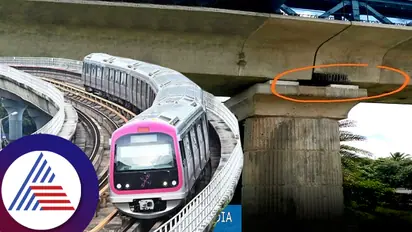Bengaluru: BMRCL to deploy AI-powered drones for monitoring Namma Metro pillars and viaducts

Synopsis
BMRCL will deploy AI-powered drones to inspect Namma Metro's Reach 1 corridor (MG Road–Baiyappanahalli). Equipped with high-resolution cameras, the drones will identify structural issues like cracks and erosion. This initiative aims to improve safety, reduce manual effort, and enable timely corrective measures.
The Bengaluru Metro Rail Corporation Limited (BMRCL) is set to introduce artificial intelligence (AI) and drone technology to monitor the safety of concrete structures on the metro's first operational corridor, Reach 1, between MG Road and Baiyappanahalli. This section has been operational since 2011, and the new initiative aims to ensure the safety of viaducts and pillars along the route.
Drones equipped with high-resolution cameras will be deployed to collect data on these structures, said Sumit Bhatnagar, BMRCL Director (Operations and Maintenance). The data gathered by the drones will be analyzed using AI tools to detect structural issues such as cracks, erosion, or honeycomb patterns in the concrete.
Bengaluru: BMRCL targets 220 km of Namma Metro expansion in 5 years
BMRCL is in the process of finalizing specifications for the system and plans to invite tenders for the AI-powered drone inspections soon. "The AI-based system will assess the severity of any damage and issue alerts to help engineers take timely corrective actions," Bhatnagar stated.
Bengaluru's Yellow line metro delayed again; Techies disappointed
The drones will focus primarily on monitoring viaducts and pillars, identifying defects and suggesting appropriate measures like epoxy sealing or other interventions. "AI-powered analysis will determine if the damage is critical and recommend suitable solutions," he added.
Bhatnagar emphasized that while such defects are rare, some issues go unnoticed during construction and require immediate attention to maintain safety. Currently, inspections are conducted manually using binoculars, cameras, and hydraulic platforms, which are time-consuming and labour-intensive. The introduction of drones and AI will not only reduce manual effort but also enhance accuracy and speed in assessing the condition of metro structures.
Stay updated with the Breaking News Today and Latest News from across India and around the world. Get real-time updates, in-depth analysis, and comprehensive coverage of India News, World News, Indian Defence News, Kerala News, and Karnataka News. From politics to current affairs, follow every major story as it unfolds. Download the Asianet News Official App from the Android Play Store and iPhone App Store for accurate and timely news updates anytime, anywhere.